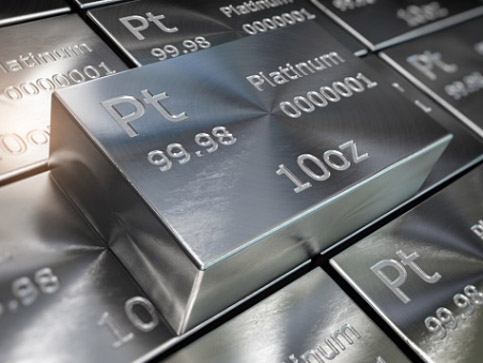Gold has long been a symbol of wealth, power, and stability. It has been used as currency, a store of value, and a symbol of status for millennia. Platinum, on the other hand, is often associated with luxury and is widely used in high-end jewelry and industrial applications. Historically, platinum has been more expensive than gold due to its rarity and industrial demand. However, in recent years, the value of gold has surpassed that of platinum. This shift raises an important question: Why is gold worth more than platinum?
Understanding the Value of Gold
Gold has been revered throughout history for its beauty, rarity, and durability. Its value is influenced by several factors:
Cultural and Historical Significance: Gold has been used as a form of currency and a symbol of wealth for thousands of years. Its deep-rooted significance in cultures around the world gives it a timeless appeal.
Investment Demand: Gold is often seen as a “safe haven” asset. During times of economic uncertainty, investors flock to gold as a store of value. This increased demand can drive up prices, especially during periods of financial instability or geopolitical tension.
Monetary Reserves: Central banks around the world hold significant quantities of gold in their reserves. This practice helps stabilize the value of their currencies and provides a hedge against inflation. The demand from central banks contributes to gold’s high value.
Limited Supply: Gold is relatively rare, and its extraction is labor-intensive and costly. While new gold deposits are still being discovered, the annual increase in gold supply is relatively small compared to the existing above-ground stock, helping to maintain its value.
Platinum’s Value and Its Applications
Platinum is a precious metal known for its rarity and industrial applications. It is used in various industries, including automotive, jewelry, and electronics. Despite its rarity, platinum’s value has not matched that of gold in recent years. Understanding why requires an examination of several factors:
Industrial Demand: Unlike gold, a significant portion of platinum’s demand comes from industrial uses, particularly in catalytic converters for automobiles. The decline in demand for diesel vehicles, which use a higher amount of platinum in their catalytic converters, has contributed to a decrease in platinum prices.
Jewelry Demand: Platinum is popular in the jewelry industry, especially for engagement rings and high-end pieces. However, the demand for platinum jewelry is not as robust as it is for gold, particularly in markets like China and India where gold is deeply ingrained in cultural and religious traditions.
Supply Dynamics: Platinum is rarer than gold in terms of annual production. However, the regions where platinum is mined, primarily South Africa and Russia, have experienced various challenges, including labor strikes and political instability, affecting production and contributing to supply uncertainties.
Why Gold is Worth More Than Platinum
Several key factors explain why gold is currently worth more than platinum:
Safe-Haven Status of Gold: Gold’s reputation as a safe-haven asset means that during times of economic uncertainty, investors prefer gold over other assets, including platinum. This increased demand drives up the price of gold, particularly during recessions or financial crises.
Central Bank Reserves: Central banks around the world hold gold as part of their monetary reserves. The significant demand from central banks creates a steady and substantial market for gold, keeping its value high. Platinum, in contrast, is not widely held by central banks, limiting its demand as a reserve asset.
Market Liquidity: Gold is traded in highly liquid markets, with vast amounts exchanged daily across the globe. This liquidity attracts investors and keeps the price of gold relatively stable, even in times of market volatility. Platinum markets, while significant, are not as large or liquid as those for gold, leading to more price fluctuations and less investor confidence.
Cultural and Emotional Value: Gold’s deep cultural and emotional value, particularly in regions like Asia and the Middle East, sustains its demand even when economic conditions are unfavorable. The same level of cultural significance is not attributed to platinum, which is often viewed more as an industrial metal than a symbol of wealth and prosperity.
Changing Industrial Demand for Platinum: The shift away from diesel vehicles and advancements in alternative technologies have reduced the industrial demand for platinum. As a result, the price of platinum has not kept pace with gold, despite its rarity.
See also: The Hidden Value of Platinum: Its Price in Comparison to Gold
Conclusion
The value of gold surpassing that of platinum is a reflection of several factors, including gold’s historical significance, safe-haven appeal, central bank demand, and cultural value. While platinum remains a valuable and rare metal with important industrial applications, it does not hold the same universal appeal as gold. As economic conditions continue to evolve, gold’s status as a preferred asset for investors and central banks is likely to keep its value high, often outpacing that of platinum.
For investors, understanding the reasons behind the relative values of these two metals is crucial for making informed decisions. Whether considering gold as a long-term store of value or platinum for its industrial uses, recognizing the market dynamics at play can help guide investment strategies.

